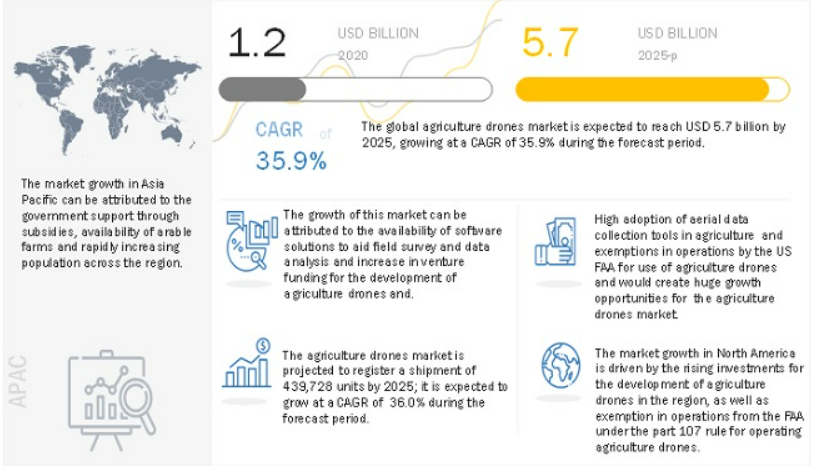Introduction
Agriculture has been around for around 12,000 years and has undergone substantial changes from its first implementation. From small local farms to massive thousand-acre farms, the need for innovation has been almost a necessity to keep up with the expanding size of farms. The average US farm is around 445 acres big (keep in mind a football field is around 1.3 acres). With the current state of farming, it is incredibly hard to monitor an entire farm without the use of technology. This is where drones have become an invaluable resource.
Uses?
Drones are used for various jobs in farms all across the world in all shapes and sizes. The flexibility a drone offers is an invaluable resource to the modern farmer. One of the most common and helpful ways these drones are being implemented is for monitoring plant health and scouting future crop yield. The drones are equipped with advanced imaging equipment that uses color information to determine plant health. This information allows the farm to make informed agronomic decisions and offers quicker ways to scout an entire farm. This advanced imaging technology can also be used to inform future decisions of the farm. The collection of data by these drones can be used to track patterns and understand the soil’s physical and chemical profile. Planting and seeding have even been a growing use as of late. Using drones to plant and seed is commonly used in the forestry industry and is said to be able to plant 400,000 trees a day. The use of these drones has been around for quite some time but we are starting to see even more advancements in how drones are being used. We’ve seen machine learning in drones become used more in order to become better at monitoring lesser-known crops and improving the capabilities in developing nations. Overall this drone technology is expanding and becoming a versatile asset to many farms.

Economic
Drones are used in many areas of the economy and seem to be growing in all areas. The agricultural drone market (which I didn’t realize existed) was a 1.2 billion dollar industry in 2020 and is expected to grow to 5.7 billion by 2025. This may be surprising but there are MANY agriculture drone companies. If you google “Agriculture drones” you will see ads for many of these companies. One such company named Taranis began in Israel and has now grown to monitor over 3 million acres of farmland. In September of 2022, Taranis raised 40 million dollars in order to grow their business even more. This illustrates the booming industry that is agricultural drones.

Outro
With food insecurity being an increasing problem, India has urged other G20 countries to invest in these new drone technologies. India has seen great improvements in crop yields over the past eight years, going from 265 million tons a year to 315 million tons. This big jump in crop yield is not a coincidence seeing as the budget for the agriculture sector has grown by 4.5 times over the same time frame. India seems to be a leader in a new era of farming and has seen great results for its new farming practices. Overall agricultural drones seem to be a booming industry that is projected to make lots of money and also help lots of people. With the increased prevalence of AI and new technology, we could perhaps see even more advancements within this field. This will be an interesting field to monitor over the next few years as I could see it becoming a good industry to invest in as it is adopted even more globally.
